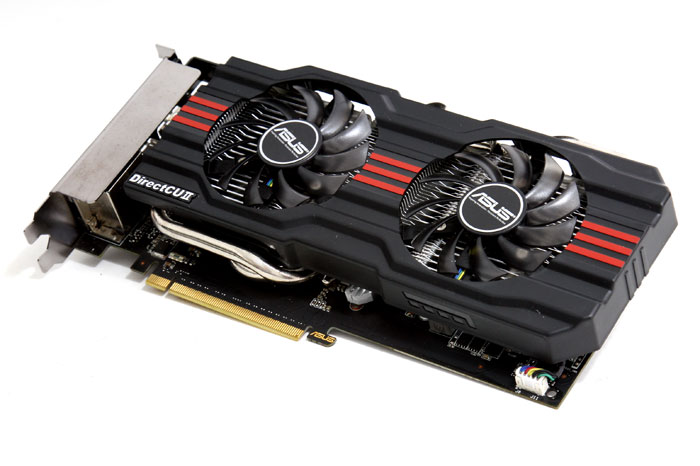Final words and conclusion
Final words and conclusion
ASUS has a lovely and very silent offering with the GeForce GTX 660 DirectCU II TOP edition. It's factory overclocked relatively high, customized and custom cooled how can one not like that?, especially if all the variables work out so well.
But as always let's first discuss the GeForce GTX 660 as reference product all by itself. With the new GK106 silicon NVIDIA certainly has a product at hands with the means to be extremely competitive in the mainstream market. It is however a little weird to see the product released so close after the Ti, and the 660 Ti definitely is my favorite product out of the two. Realistically though, the 660 Ti does come with a higher price tag and that's where the regular GeForce GTX 660 cards are going to rule. We expect these products to sell in the sub 229 EUR/USD segment once prices settle a little.
For that money you'll receive a card that is very capable of playing the very latest games. A rough equivalent would be saying that the 660 is performing somewhere in-between a GeForce GTX 570 and 580 .. and that's not a bad position. At the competitor side the competition is the Radeon HD 7870.
The 192-bit memory bus definitely has en affect, but being GDDR5 and running at roughly 6 Gbps really isn't as big of an Achilles heel as I expected. The fact that this mid-range product is equipped with 2GB of memory, does help as well as it is a great balance in-between frame buffer needs and 1920x1080/1200 monitor resolutions.

If you do purchase the reference clocked based products, hey no worries, crank open the power limiter to it's maximum and clock it at say 1050~1100 MHz on the core clock frequency. You will have forfeited a tiny little bit on power consumption but immediately the card will be at competitive GTX 660 Ti performance levels.
The GeForce GTX 660 is a card that is very lovely for those gaming at 1920x1080/1200. Your performance will be quite good and in balance with the games of 2012. In Battlefield 3 you are at roughly 42 frames per second on average with 4x AntiAliasing, 16xAF at Ultra quality settings. That's in 1920x1200 by the way. If we take Anno 2070 at the same resolution with the same settings in the very best quality we average out at 58+ FPS. Crysis 2 with the High Quality texture pack in DX11 at Ultra settings .. roughly 45+ FPS. These are the scores that matter as they are in very acceptable ranges.
Power consumption then, it's low if you place it into context with the game performance. Roughly 115 Watt is what we measure during gaming. The card is allowed to peak to 140 Watts. That does pose a problem though, these card will not be grand overclockers as they quickly run into the power design limitations.
The noise levels for this product are pretty non-existent as well. The ASUS Direct CUII cooler does a really splendid job, in a closed chassis you won't be able to hear it. Directly related to the cooler is obviously temperatures. The card will idle at give or take 32 Degrees C and we measured a maximum of 65 Degrees C under full workload. Overclocked it spurted towards roughly 67 Degrees C, so that remains very good.
Overclocking itself then, I already mentioned the power design imitation on GK106 with the one 6-pin power connector but on top of that NVIDIA put brakes on tweaking. Your maximum added (software based) voltage will be 100 Mv (if the AIB/AIC partner supports voltage tweaking of course). The Power Limiter will get you a little extra out of the board, the ASUS card allowed a small +10% extra on the power design is possible. Meaning 140W x 1.10%= 154 Watt. Once the GPU reaches that power state or a certain heat level, it will start throttling down. Regardless of that fact, we where able to add another 50 MHz on the core but honestly the card was barely overclockable as remember, this card come factory overclock for you. The memory can be overclocked fairly well though, add +350 MHz and you'll end up at 6696 MHz. Your card now is 10% faster on average.
ASUS has a very nice product at hand with their DirectCU II TOP version, the factory clock makes it perform pretty close to the reference GTX 660 Ti and the cooler does what it needs to do, it's blatantly silent and keeps the card below 65 Degrees C. And if you need a little extra, there is tweaking room left -- but little remains the key word here. 
The ASUS GeForce GTX 660 DirectCU II TOP edition due to its completely custom design we expect it to be in the 249 USD/EUR price range. It's a card we can and will wholeheartedly recommend for any gamer that needs good performance for an okay price.
- Leave/read comments on this product
- Sign up to receive a notice when we publish a new article
- Or go back to Guru3D's front page

